Ruinart
Kumeu River
Estate Chardonnay 2016
🎄 Advent Halfy Calendar Day 19 🎄
🎅 Santa says “Prefect for a sunny Christmas BBQ in New Zealand 🌞 🎄 🍗 I’ll stop by on the 24th 😁”
📝 I say for £22 RRP for 75cl this is a cracking Chardonnay you can’t go wrong with at this price 👏
⏩ 🍾 Mrs E got Ruinart Brut NV
📍 Kumeu River Estate Chardonnay 2016
🏵 91-92 points & should improve
🍇 Chardonnay
🍷 Light straw yellow
👃 A burgundy-esq delicate fresh clean nose of oak free fine chalky minerals through soft citrus, light green apple & peach w/ honey tones, flint, melon, mango, smokey puff & lemongrass
👄 Med body of smooth creamy crisp citrus fruits intertwined with mashed green apple in slight dry minerals w/ melon, peach and green lemongrass tones in med acidity
🎯 Med+ touch mineral chalky dry finale of green lemon, apple, peach & unripe honeydew melon
— 7 years ago
Ruinart
Reserve Brut Baron Philippe de Rothschild Brut Champagne 1971
Amber and pinkish with a slightly stinky nose with dusty notes. No mousse at all. Odd but rather beautiful and poised on the palate. Fresh, rounded, with roses, marmalade hints, orange and a settled length. Interesting — 7 years ago
Krug
Brut Rosé Champagne Blend
There are certain occasions that call for Krug Rosé. So, HBTM! The bottle was corked in the summer of 2014. It’s a blend of 45 reserve wines with the oldest being from 2007 and the youngest 2002. This is why I think Champagne Makers are some of the most talented people making wine. They are constantly blending up to 100 plus wines to bring that bottle to bottle and year to year branded flavor of consistency. On the nose; red & pink spring flowers, cherries, strawberries, watermelon, black cherry, black raspberries, notes of blood orange citrus, baked bread, soft volcanic mineral and elegant chalkiness. The palate is always ridiculously delicate. Micro bubbles, silky rich texture with beautiful soft acidity. The palate fruits are similar to the nose; rich & ripe cherries, strawberries watermelon, black cherry, black raspberries, notes of blood orange citrus with hints of marmalade. Red & pink spring flowers, baguette crust, soft powdery minerals that give the palate a slight sting and super powdery chalkiness done just right. The finish is beautifully rich, textured, revealing itself in layers and lasts minutes. Photos of; Founder Joseph Krug, House of Krug, Winemaker Eric Lebel, Krug’s Clos du Mesnil, a small plot of 1.85 hectares of Chardonnay...one of the world’s greatest vineyards and their salon tasting room. Producer history & notes...Krug was founded by Joseph Krug in 1853. They are based in Reims, the main city in France’s Champagne region. It is one of the famous Champagne houses that formed part of the Grande Marques. Today the house is majority owned by the multinational conglomerate LVMH, which owns Moët Hennessy, Louis Vuitton S.A. and who’s wine producer portfolio includes other well known wine brands such as; Moët & Chandon, Veuve Clicquot, Château d'Yquem, Ruinart & Cheval Blanc, Dom Perignon and many others. Despite LVMH's majority ownership, the family is still actively involved in all the key decisions of the house but does not manage the day-to-day operations. Joseph Krug was born Johann-Joseph Krug, a butcher’s son, in Mainz, on the Rhine in 1800 when the city was part of the Napoleonic Empire. Having dispensed with the name Johann, he left Mainz in 1824 and in 1834 moved on to Paris. Germans were in demand in France as accountants and bookkeepers. So, Joseph joined Champagne Jacquesson in Châlons-sur-Marne. He spent eight years with Jacquesson. His work took him beyond accountancy. He went around Europe testing the market and assessing criticism from wine sellers and customers. He learned about composition and taste so that by 1840 he already seemed to have been blending Champagne for at least one other house. In 1841, he married Emma-Anne Jaunay. The daughter of a French hotelier based in London’s Leicester Square. The following year their son Paul Krug was born. In 1842 he moved to Reims and following a year later, Krug et Cie was founded with his partner, Hyppolite de Vivès. Joseph was fluent in French, English and German and even spoke some Russian, putting the company in position to exploit key overseas markets. Joseph died in 1866 and was succeeded by his son Paul Krug, who had been trained by his father to takeover. Joseph under the supervision of Paul, Krug was established as a Grande Marque. By the 1880s the prestige of Krug was acknowledged in the United Kingdom and became the primary overseas market for Champagne. In 1866, the House moved into Rue Coquebert, in Reims as it remains. After Paul’s death in 1910, he was succeeded by his son, Joseph Krug II. However, during World War I Joseph II was taken prisoner and his wife Jeanne played a key role in the House at a time when the Western Front divided the region between the Allies and the Germans. After the war, Joseph II’s slow recovery led to his nephew Jean Seydoux becoming joint manager in 1924. In that decade, the Krug 1926 and 1928 vintages were created, which have been considered by critics to be amongst the greatest Champagnes. Lawyer and wine writer Maurice Healey declared “Krug” the king of all Champagnes. Further, “that the 1928 Krug was the best wine made in the present century.” By the mid-1930s, Paul Krug II, the son of Joseph II, was active in the business and would become head of the House from 1959 to 1977. His father died in 1967, by which time he was, according to Patrick Forbes, “one of the most popular and respected figures in the Champagne district.” In 1962 Henri Krug, the son of Paul II, joined the management, as did his brother Remi three years later. Their arrival was followed by a series of innovations, including extensions in the range of Champagnes. In 1979, for the first time, a graduate winemaker joined the House. In January 1999, the House became part of LVMH and by 2007, the brothers, while remaining on the tasting committee, had stepped down from day-to-day responsibilities. In 2009 Olivier Krug, the son of Henri, became House Director. At harvest, Krug grapes are pressed close to their plots with the first juice kept for 24 hours in a vat prepared for the fermentation stage. The pressing from each plot is vinified separately. A pressing contains 4,000 kilos of grapes and yields 20.5 hectolitres of first juice (cuvée), which is poured into twelve oak casks chosen at random. Once fermentation is complete, the eleventh and twelfth casks are used to top up the other ten casks in order to protect the new wines from oxidation. For fifteen days, each cask is topped up with wine from the same plot. Krug uses small 205 liter oak casks tailor-made from trees that are more than two centuries old in the forests of Hautes Futaies in Central France. The average age of Krug oak casks is 20 years. They are retired after approximately 40 years of use. The wines remain in the casks for several weeks. During this period, clarification occurs naturally from the cool temperature of the cellar given the coming winter, as does a micro-oxygenation process from the use of natural containers, making the wine more resistant to oxygen over time. Finally, between December and January, the wine is drawn off into small stainless-steel vats. From here, depending on the decisions of Krug’s tasting committee, the wines will either contribute to that year’s assemblage or be stored in steel vats in the House’s library of 150 reserve wines to be used in the blend of a future Krug Grande Cuvée and or Krug Rosé. — 8 years ago


Ultramarine Wines
Charles Heintz Vineyard Sparkling Pinot Noir Rosé 2011
Michel Arnould & Fils
Verzenay Grand Cru Brut Champagne Rosé Blend
This rose is an interesting change from the ones we've been enjoying lately. The fruits are slightly candied & soured. Not quite watermelon Jolly Rancher but it's close. Black cherries, black raspberries, watermelon, cherries, poached strawberries, cranberries, raspberries, tangelos & pomegranate reduction. The fruits leave a film on your palate as if you'd had a piece of hard candy. The bubbles aren't micro but they feel very delicate on the palate. The minerals are light, soft and beautiful as is the chalkiness. The finish is round, full, expressive and long. Outstanding value versus some of the more expensive roses we had lately...Krug, Billecart and Ruinart. It's not as good or as well made but it's certainly pleasurable. — 9 years ago
Ruinart
L'Exclusive Brut Blanc de Blancs
A treat at Ruinart. — 9 years ago
Pol Roger
Réserve Brut Champagne Blend
Lovely balance of tree fruit and brioche. Crisp yellow and gold apple with tons of acidity on buttered autolysis goodness. Poor mans Ruinart blanc de blanc. — 10 years ago
G. H. Mumm & Cie
Mumm de Cramant Brut Blanc de Blancs Champagne
Tasted along side another NV blanc de blanc from Ruinart - found this to be much more crisp and fresh, though as a package just pipped by the R — 11 years ago
Drappier
Rosé de Saignée Brut Champagne Blend
What a really nice Rosé Champange from Drappier and an extraordinary value at Costco at $39.99. I’m not giving up my Billecart Salmon Rosé but, this is pretty close to Ruinart. At this price point, it’s being well added to rotation.
The nose reveals, ripe; black cherries, strawberries, raspberries, cherries, watermelon and orange rind citrus. Fruit blossoms, pink rose petals, nice, soft chalkiness, sea spray, sea shells, volcanic minerals and a touch of white spice.
The palate is fresh & lively. Nice micro bubbles. It’s thick and rich. The fruits are ripe and deeply concentrated. Ripe; black cherries, strawberries, raspberries, cherries, watermelon, orange rind citrus, nice, soft chalkiness, sea spray, sea shells, strong presence of gritty volcanic minerals that press deeply into the palate, a fair amount of dark spice on the palate with fruit blossoms, pink & red rose petals. The acidity is really good...lively. The long, rich, beautiful, well balanced finish persists several minutes.
Photos of, the Champagne House of Drappier, wide & really chalky caves, different oak vats they use for fermentation and one of Drapper’s Grand Cru vineyards. — 7 years ago
Veuve Clicquot Ponsardin
Brut Rosé Champagne Blend
I’ve avoided this Rosé Champagne from Veuve Clicquot like the plague. However, time to try it.
It’s classic Rosé style but, light all the way around. It’s quaffable but, at this price point, I’m not giving up my BSR, Ruinart, Drappier etc.. There simply is no wow factor here. For me, all of their cuvées just don’t deliver the quality like other producers in and around their price points.
However, they have a beautiful property and amazing caves. — 7 years ago
Château Branaire (Duluc-Ducru)
St. Julien- Beychevelle Red Bordeaux Blend 2006
🎄 Advent Halfy Callander Day 02🎄
🎅 Santa says I wouldn’t mind quaffing this with Rudolf & watching his nose glow oh so red
📝 I say a fab wine in an off year that’s showing well at peak in a half bottle 😉
⏩ 🍾 Mrs E got Ruinart Rose 😄
📍 Château Branaire Ducru 2006
🏵 91-92 points
🍇 70% Cabernet Sauvignon, 23.5% Merlot, 4% Petit Verdot & 2.5% Cabernet Franc
🍷 Deep blackened opaque ruby
👃 Smoked oak bathed blackcurrant & dark plum in thick melted liquorice w/ prune, date, minerals, damp cellar & worn leather
👄 Med body of smooth blackcurrant, red plum & dark cherry in cocoa & liquorice w/ an earthy creamy coffee tone & mineral twist
🎯 Med+ silky earthy dark berry/cherry finale w/ a liquorice kiss 💋 & a mineral linger
— 7 years ago
No Girls Wines
Tempranillo 2014
Some technical shit here, in really quick snippets, might not make sense to most. Learned a lot working with some really high PH fruit over the last few years. Has to do with high Potassium conversion levels in the Vineyard, yada, yada...The Rocks District has notoriously high Ph fruit, has to do with the terroir. The best way to protect against spoilage and Volatile Acidity during aging is maintaining sulphur levels. About 5 years ago I was taught in a Ruinart seminar that they believe Sulphur fully integrates into wine in 3 years. Recently I’ve hit some health issues and am trying to rebalance sulphur levels in my body. Have cut out all thing that breakdown into So2 based compounds, alliums, bitter greens, eggs, wines, aged cheese, aged meat... So wife opened this new release yesterday, she drank, I sniffed, it’s completely underlying of sulfuric compounds. She decanted it and we came back to it 12 hours later and some black fruit was showing but still a lot of sulphur. It took me back to the Ruinart seminar, wonder if these will integrate 3-5 years down the road. Really interesting stuff. These are easily my favorite labels in the business. The boxes they come in, the whole packaging...I love it, love what Christophe does. — 8 years ago

Ca' d'Or
Selezione Grand Vintage Noble Cuvee Franciacorta Chardonnay Pinot Noir
Finally, after several years, I was able to get ahold of a Franciacorta! Traditional Method, 90% Chardonnay, 10% Pinot Nero, aged 7 months in stainless steel, then secondary fermentation in bottle, aged on lees for 30 months as a non vintage. For $26, it was better than most champagne. It was like a baby Ruinart Blanc de Blanc in character. Aromas of Meyer lemon zest, clover honey, ripe apricot, brioche, and candied ginger. Pallet full of fine, and very present bubbles, exhibiting notes of golden apples, pineapple, white pear, lemon, creme brulee, clove, and a zippy finish. The bottle was empty way to fast. — 8 years ago
Laurent-Perrier
Cuvée Rosé Brut Champagne
On the nose, strawberries, cherries, black cherries, blood oranges, soft, unstated chalkiness, volcanic minerals and fresh red & pink roses. On the palate, its delicate, fruit driven. More fruit concentration that the Billecart-Salmon but less than the Ruinart Rosés. Strawberries, cherries, black cherries, blood oranges, tangerines, nice chalkiness, round acidity, brioche & pink roses. It's much more floral than the Billecart or the Ruinart. However, the finish is not quite as long as the other two as well. But, it's still very nice. A little history on the house. Laurent-Perrier was founded in 1812 and is the main company of the Laurent-Perrier Group, whose other properties include; Salon, De Castellane and Delamotte & Chateau Malakoff. Laurent-Perrier was founded in 1812 when a former cooper and bottler, Alphonse Pierlot purchased two parcels of land named "Plaisances" and "La Tour Glorieux" in Tours-sur-Marne. When Pierlot passed he willed the company to his cellar master, Eugene Laurent, who ran it with his wife, Mathilde Emilie Perrier. In 1925 Veuve Mathilde died, and left the company to Eugenie Hortense Laurent. Eugenie sold the company to Mary-Louise Lanson de Nonancourt in 1939. In 1949 Bernard de Nonancourt became the owner of the company and saw it become one of the largest family-owned Champagne houses. The de Nonancourt family still retains majority ownership today. Check out those old moldy bottles in the small photo on the left. They've remained untouched for a very long time. — 8 years ago

Schramsberg Vineyards
J. Schram Sparkling Chardonnay Pinot Noir 2008
This is an excellent example of honey, vanilla, toasted brioche, and very elegant body. Refined bubbles reminiscent of the Dom Ruinart.
Please make time to get a tour from this wonderful gentlemen. Jesus you have an inviting personality that is old school in every way!
@jesus g @Paul T @Martin G Rivard @Neal Schaffer @TheSkip @Terri Walker @Warren Sapp @Vanessa D @Jacqueline @Bill Bender @leon egozi @David L @Doug Davidson @Eric S @Eric LaMasters @Jim Trobaugh @Carl Fischer — 9 years ago


Fleury Pere & Fils
Courteron Brut Champagne Blend
If the Ruinart & Billecart Roses are just a little more than you want to spend on Rose champagne, this could be your huckleberry at 2/3 the price. It's just a little off their quality. This is more subtle than the Billecart with the fruit more similar to the Ruinart. Black raspberries, black cherries, strawberries, pomegranate, cherries, pink roses, crystalline chalkiness, delicate minerals, just a touch high on acidity and a polish that's very similar to both producers. A great value in quality Rose champagne. — 9 years ago
De Perrière
Dry Rosé Blend
Not bad but no Ruinart — 10 years ago
Veuve Clicquot Ponsardin
Vintage Rosé Brut Champagne Blend 2004
Very nice vintage rose, think I prefer Ruinart but this is really good. — 12 years ago
R. & L. Legras
Brut Blanc de Blancs Grand Cru Champagne Chardonnay
🎄 Advent Halfy Calendar Day 22 🎄
🎅 Santa says “Two more sleeps boys & girls 😊 I hope you’ve all been good! I have so I’m going to pop these bubbles 😉”
📝 I say this has aged quick in the baby bottle and very oxidative reminiscent of a Bollinger with 10 years age - a good new find 👍
⏩ 🍾 Mrs E got Ruinart Blanc de Blancs NV
📍 R&L Legras Grand Cru Blanc de Blancs Brut NV
🏵 91 points but would like to re-evaluate on a 75/150cl bottle vs 37.5cl
🍇 Chardonnay
🍷 Golden yellow straw
👃 Oxidative toasted brioche, smoke, fallen apples, honey & burnt citrus curd biscuit w/ a cream caramel & mineral undertone
👄 Med+ bodied rich ripe fine bubbled mousse of caramelised apple, honey, citrus biscuit, grapefruit & dry mineral
🎯 Med++ touch dry burnt caramel apple tarte tatin, citrus curd, grapefruit & mineral linger — 7 years ago
Dom Pérignon
Altum Villare Brut Champagne Blend 2009
Definitely more Chardonnay flavors; tastes a bit immature harsher, bolder flavor than Ruinart I just tried. Not horrible by any means... more citrusy than I’d want. — 7 years ago
Chanoine Frères
Chanoine Champagne À Reims Cuvée Rosé
2nd oldest house in Champagne, next to Ruinart. In my opinion, stunning for the price being sub $40 - perfect touch of raspberry and strawberry cream, biscuit, and very present minerality. It has an air of ruinart rosé, still more of a baby but none the less a high quality production of Reims none the less. This family also owns and produced Tsarine, as well as De Venoge who resides in downtown Epernay, close to Möet & Chandon. — 7 years ago
Perrier-Jouët
Blanc de Blancs Brut Champagne Blend
Nice NV BdB but @ £65-80 a little high priced compared to other NV like Ruinart BdB
🍷 Clear straw yellow w/ green hue
👃 Fine shortbread apple biscuit w/ citrus zest’s, honey brioche & smokey mineral rocks w/ farmyard smokey saline dried meats
👄 Refreshing crisp green apple infused fine bubbles mouse w/ citrus spritz, minerals, sour pear & grapefruit
🎯 Long bone dry mineral infused dry green fruits — 8 years ago

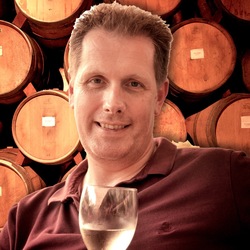
Bollinger
Brut Rosé Champagne Blend
On the nose; bright cherries, ripe strawberry & cranberry reduction, black raspberries, raspberries, watermelon near the rhine, mixed orange citrus, oyster shells, baguette crust, understated volcanic minerals, chalk, saline, fresh pink roses and florals. The body is full and a shade gluey. The fruits are ripe, rich and candied/gummy in style. Bright cherries, black cherries ripe strawberry & cranberry reduction, black raspberries, raspberries, watermelon near the rhine, mixed orange citrus spray, saline, seashells, soft grey volcanic minerals, lots of grippy powdery razor sharp chalkiness, baguette crust, fresh pink roses & florals, acidity that is round and well done, understated delicate micro bubbles and a long, well balanced, rich finish. The reason why I prefer the Billecart Salmon, Ruinart & Laurent Perrier over the Bollinger is it’s a little too sweet for me. Photos of; the House of Bollinger, cellar, headstone that marks one of their vineyards and their harvest staff picking perfectly manicured rows. Producer notes and history...Bollinger has roots dating back to 1585 when the Hennequins, one of the Bollinger founding families, owned land in Cramant. Before the Bollinger house was founded in the 18th century, the Villermont family practised wine making, though not under their family name. In 1750, Villermont settled at 16 rue Jules Lobet, which would eventually become the head office for Bollinger. In 1803 Jacques Joseph Placide Bollinger was born in Ellwangen, in the kingdom of Württemberg. In 1822, he moved to Champagne and found work at the house of Muller Ruinart, which no longer exists. Many other Germans came to settle in the Champagne region, including Johann-Josef Krug and the Heidsiecks, who founded a house that would become; Charles Heidsieck, Piper Heidsieck, Veuve Clicquot and others. The Champagne house Renaudin Bollinger was founded in 1829 in Aÿ by Hennequin de Villermont, Paul Levieux Renaudin and Jacques Bollinger. The partners agreed that the Villermont name would not be used on the labels, hence the house name Renaudin Bollinger. Starting when Jacques Bollinger married Charlotte de Villermont, the house has been managed by the Bollinger family. Even though Paul Renaudin passed without an heir to his name, the label did not become solely Bollinger until the 1960s. Founder Jacques Joseph Bollinger married Charlotte de Villermont. The had a daughter, who had two sons Joseph and Georges. These sons took over the company in 1885 and began expanding the family estate by purchasing vineyards in nearby villages. The sons also developed the image of the brand, such as when Bollinger became the official supplier to the British court and received a Royal Warrant in 1884 from Queen Victoria. In 1918, Jacques Bollinger, the son of Georges, took over the company and married Emily Law de Lauriston Boubers, known as "Lily". Jacques expanded the facilities by building new cellars, purchasing the Tauxières vineyards, and acquiring the assets of another Champagne house on Boulevard du Maréchal de Lattre de Tassign, where Bollinger's offices are presently located. When Jacques Bollinger died in 1941, Lily Bollinger took over. Lilly expanded production with the purchase of even more vineyards, but is best known for traveling the world to market the brand. Bollinger was modernized under the Claude d'Hautefeuille, who acquired additional vineyards and further developed the brand internationally. Following Claude, his cousin Christian Bizot took over the Bollinger house and expanded world distribution. Their Winemaker also used several James Bond film movies to market the brand. Bollinger is fermented in oak barrels. At harvest, only the first pressing is used in the cuvée, unless the vintage is of particularly high quality, when a second pressing of Chardonnay will be used. Bollinger sells the second pressing, the tailles. Bollinger utilizes two pressing houses (Louvois and Mareuil sur Aÿ) to ensure a short distance between harvest location and pressing. When possible, grapes purchased from growers are pressed by the house. When the pressed wine arrives, the Bollinger cellar master analyzes the musts for quality, discarding and selling off those that do not meet the house standards. The first fermentation is done cru by cru, variety by variety, preserving many of the unique characteristics of the vines location. Bollinger is one of the few Champagne houses to do some first fermentation in oak barrels. Wines that will not hold up to first fermentation in wood are vinified in vats. Bollinger Champagnes usually undergo malolactic fermentation. The Grande Année 1995 did not undergo malolactic fermentation. Bollinger uses only traditional yeast. They’ve decided that new generations of yeasts (agglomerated yeasts and encapsulated yeasts) do not produce satisfactory Champagne. Vintage wine, including all wine to be used in a Grande Année, is fermented in small oak barrels, sorted according to origin and variety. Both oak and stainless steel are used for non-vintage wine. Bollinger also has the last Cooperage in Champagne. The oak barrels are all at least four years old, avoiding the transfer of tannins to the wine. The wines are only lightly filtered. All Bollinger Champagne spends a long time on its lees, contributing to the complex flavour of the wine. Though appellation d'origine contrôlée rules only require 12 months on lees for non-vintage Champagne and for vintage (NV wines, 15 months from tirage to release and vintage wines must be kept for 36 months from tirage to release), Bollinger ages their non-vintage wines three years, and the vintage wines from five to eight years. The Grande Année and R.D. Champagnes are riddled by hand. At disgorgement, Bollinger wines are given a low dosage, to maintain the balance and flavor of the wine. The company uses 6-9 grams of sugar per liter for the Special Cuvée and La Grande Année. The extra-brut R.D. is dosed between 4 and 5 grams. After dosage, the wines are aged an additional several months, resting for a minimum of three months before shipping. Bollinger owns nearly 160 hectares of vines, producing more than 60% of its supply. The vines are largely Pinot Noir, specifically clone 386. Bollinger believes this clone ensures good quality as well as highlighting characteristics of the various terroirs. The vineyards also include some rare ungrafted French vines from before the phylloxera. Bollinger owns vines all over Champagne, including the crus of Aÿ, Bouzy and Verzenay. — 8 years ago

I figured a real keyboard needed to be involved, thanks for the insight.

Pierre Gimonnet & Fils
51530 Cuis 1er Cru Brut Chardonnay Champagne
This champagne was recommended to me as a substitute out of stock Gosset. Awesome. So smooth. Tiny stream of bubbles I think I like it just as much as Ruinart. — 10 years ago
Billecart-Salmon
Cuvée Nicolas François Billecart Brut Champagne Blend 1999
15 years young. None of the aggressive SO2 notes you often see in '99s from other relatively large houses. Just pure fruit with tons of horsepower, this is definitely showing and well right now. Toasty autolytic notes blend in seamlessly. This wine feels like good natural bottle age, no forced reduction (a la Ruinart) or oxidation edge (Krug, Bollinger). It has a long window in front of and it should age really gracefully. Impressive. — 11 years ago


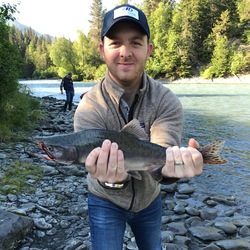

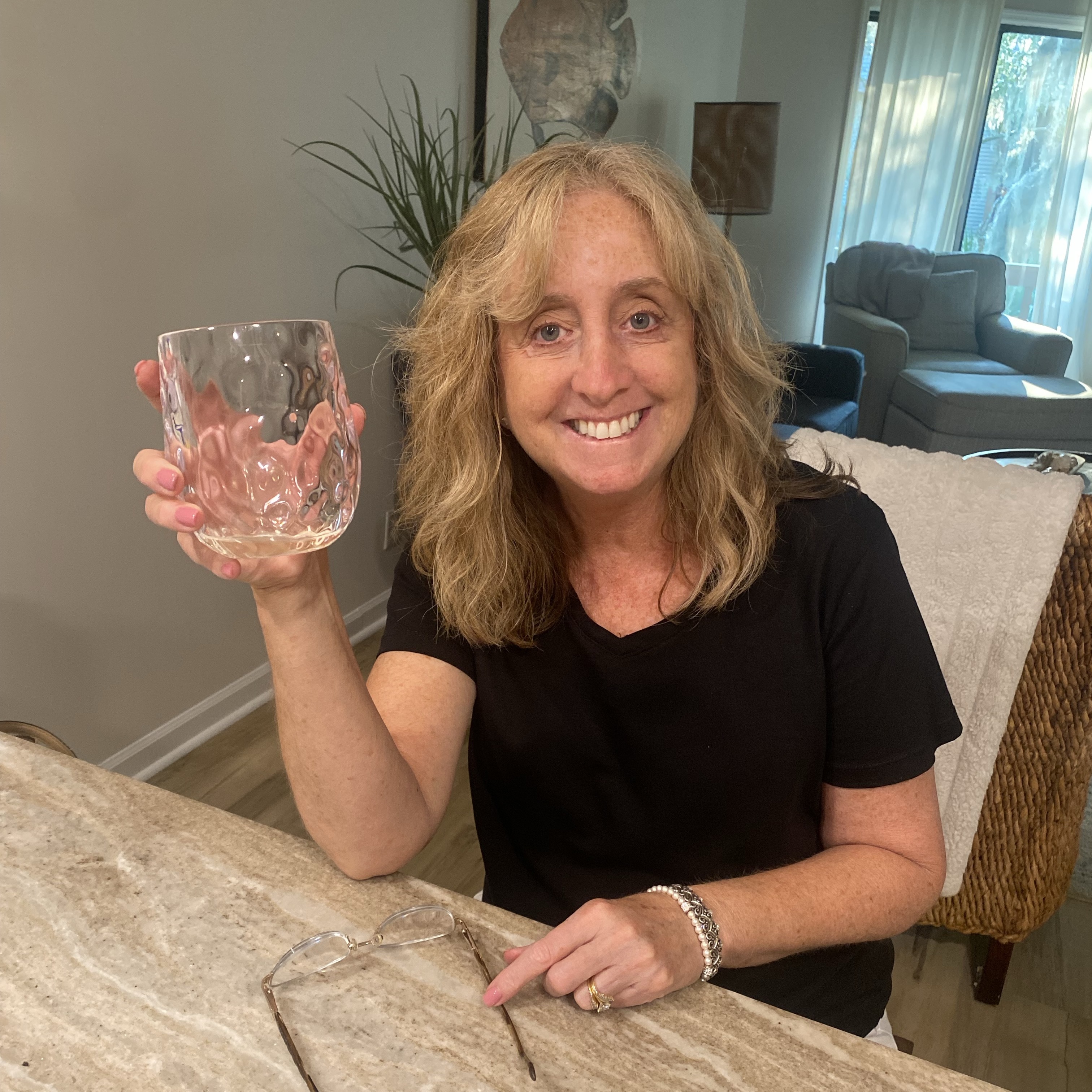





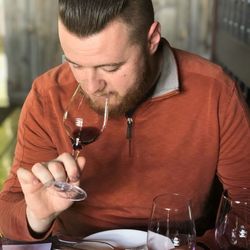

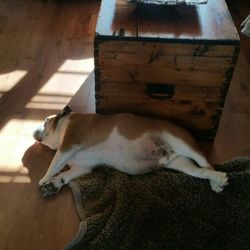





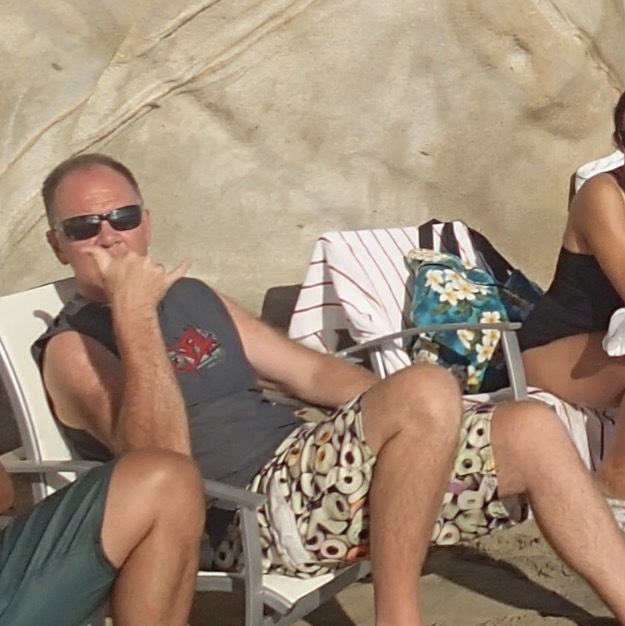
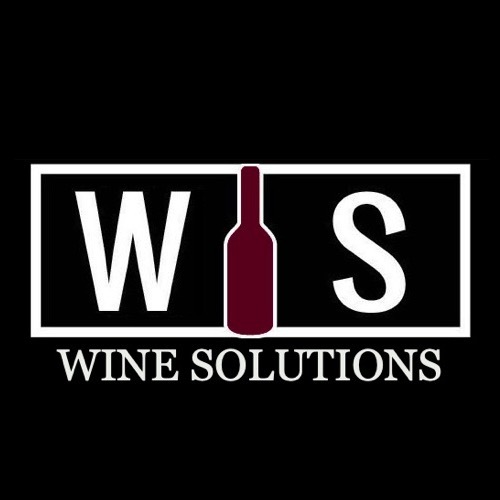




Somm David T
Independent Sommelier/Wine Educator
The images aren’t flashy like Krug, Billecart or Ruinart etc. but, if you want a really nice, well priced Blanc de Blanc Champagne, this is for you. At, $24.99, I would challenge anyone to find another Champagne let alone a good one at this price point. As well, an equal Cremant or sparking wine in the same price range. Exceptional QPR here!
The nose is bright and fresh. Crisp green apple, lighter color citrus, overripe pineapple, orange peel and spray, touch of golden apple, touch of bruised pear, ginger notes, vanilla cream soda, caramel notes, spice, hints of baguette crust, honey, darker minerals with chalk, sea spray, fruit blossoms and withering yellow lilies.
The wine brings rich, reductive freshness and substantial acidity to your palate. Crisp green apple, lighter color citrus, overripe pineapple, orange peel and spray, under ripe green melon, touch of golden apple, light bruised pear, ginger notes, vanilla cream soda, caramel notes, marzipan, white spice, hints of baguette crust, honey, darker minerals that press the palate deeply with teeth & heat, nice chalkiness, sea spray, fruit blossoms with withering yellow lilies. The finish is quite nice with richness and goes on and on and on.
Photos of; the House of Baron Fuentes, Chardonnay grapes being harvested and Eric De Brisis, the proprietor for Baron Fuente, which is owned by Ignace Baron.
Baron Fuente is a Champagne negotiant that also owns thirty-eight hectares of their own vineyards. They are located in a village called Charly at the far western edge of Champagne. The side closest to Paris. — 7 years ago